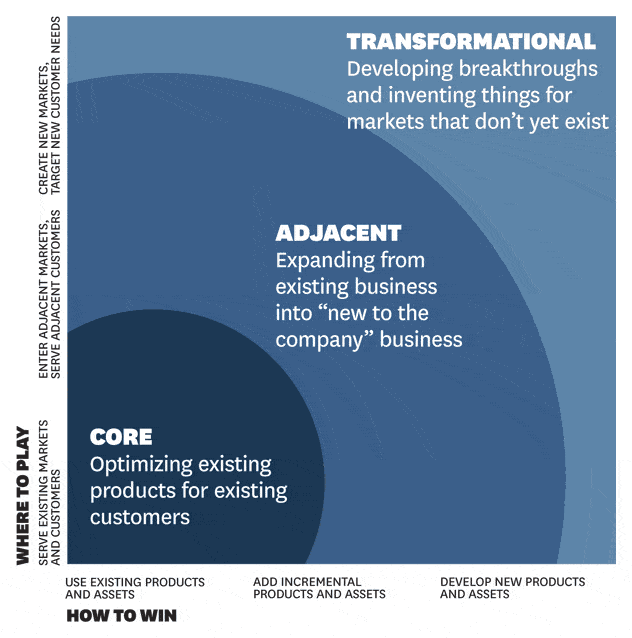It’s an age-old saying in business: if you’re not growing, you’re dying. That may sound a little extreme to some entrepreneurs, but the fact is that standing still isn’t an option.
Competitors will enter your market. They’ll innovate and iterate, and eventually, the ones growing around you will end up with your customers because they evolved with the market. Studies show that only half of businesses make it past five years, while 70% of new businesses won’t be around long enough to celebrate their 10th anniversary.
To be clear, growth doesn’t just happen on its own. Rather, it’s cultivated through strategy and execution that takes into account short-term needs and long-term goals.
Let’s look at what does into a business growth strategy and how you can develop one to give your business the best chance at success:
What’s in a Business Growth Strategy?
Business growth looks different to every entrepreneur and organization. For some, growth may be as simple as scaling your existing marketing to earn more sales. For others, however, it could take on a variety of forms, from developing new products to exploring new markets.
Typically, business growth occurs via one or more of the following four methods:
Diversification
Touted as the riskiest growth strategy, diversification focuses on developing new products for new markets. For larger businesses, this is often achieved through acquiring companies that offer different services.
As for entrepreneurs, diversification could mean learning a new skill that you can pitch to a different audience than your existing customer base. In other words, don’t limit yourself to one income stream.
Market Penetration
The most straightforward growth strategy, market penetration allows you to drill deeper into your existing market. The goal is to sell more services or products to your existing target customers, which often results in a greater investment in marketing versus product development.
Product Development
The goal of growing via product development is to create new products and services to sell to your existing target market. For example, you could add a new feature to an existing product or service or create an entirely new offering that your current buyers are likely to want or need.
Market Development
Similar to product development, market development refers to exploring new audiences that can benefit from your existing product offering. For entrepreneurs, this could mean finding a new vertical or developing your messaging to a different segment.
The Right Way to Invest in Business Growth
In many cases, achieving business growth doesn’t rely on a single growth strategy, but rather a combination of two or more of the above. The real question is this: how can you decide where to invest your time and resources?
Harvard Business Review developed the Innovation Ambition Matrix to help you prioritize your initiatives, and while there are no hard and fast rules on how or when to grow, the matrix follows a 70/20/10 rule:
- 70% of your efforts go into your Core Initiatives;
- 20% are allocated to Adjacent Initiatives; and
- 10% go toward experimenting and developing something entirely new
Your Core Initiatives are those that relate directly to the implementation and growth of existing products and markets. Typically, the bar to entry for growth on core initiatives is lower because you already have much of the information you need to make growth a reality.
Alternatively, Adjacent Initiatives are those that are tangentially related to your core focus but bring in new aspects, such as a new vertical or an expansion of your current business model.

Using this model from an entrepreneur’s perspective, your roadmap to growth will be unique to your business. Similar to how you started your business, you’ll want to first map out your specific goals for growth, then identify the important metrics for those goals.
For example, if you’re a digital marketing entrepreneur, you might measure the number of calls being made and number of deals closed to measure your growth. From there, it’s a matter of developing a plan around those goals that can help you reach the next level.
Top Actions to Prioritize
As you’re developing a business growth strategy, the most important thing you can do for your business is to be deliberate in your actions. Understand why you choose a particular path to growth, the realistic results you expect, and the right actions that will help you achieve those results.
Focus on What You Do Best
As you’re growing and scaling your business, the same rules you followed to start your business still apply: you don’t have to be everything to everyone.
Growth can happen faster when you focus on your strengths rather than trying to improve on your weaknesses. Evaluate your opportunities to ensure you’re still prioritizing what you do best.
Another great way to stay on right path is to keep a pulse on competitors and industry-specific reports, making sure you use this information to help identify the opportunities as well as gaps in your niche.
From there, you can then stay focused on ‘who’ your target audience is and ‘what’ they want. This will help you best position your products/services and aid with good messaging to bring in interested buyers.
Invest in Quality Talent
There’s an old African proverb that says, “If you want to go fast, go alone. But if you want to go far, go together.” This is certainly true when it comes to growing your entrepreneurial venture.
Many entrepreneurs believe that being in business for themselves means they have to rely on their own strengths to carry out their vision, but in today’s growing workforce of freelancers, this simply isn’t true. In other words, you don’t need to think of taking on overhead in order to get the help you need.

Measure Your Progress
Don’t forget to look back and measure how far you’ve come during your growth phase. At the minimum, you should have metrics and benchmarks that will give you data-driven insights into how well your initiatives have paid off.
Seeing real figures instead of relying on guesswork can help you see where you’re moving the needle and feel confident in your growth efforts moving forward.
Wrapping It Up
Something I consistently have to remind myself of is to be stubborn about my goals but flexible with my methods and to push for progress over perfection.
It’s natural for entrepreneurs to feel like they have to get a product or service offering perfect before launch, but the truth is, you’ll learn a lot more by actually ‘doing’. Growth happens when you are taking massive action and seeing results, even if they aren’t ideal.






4 Responses